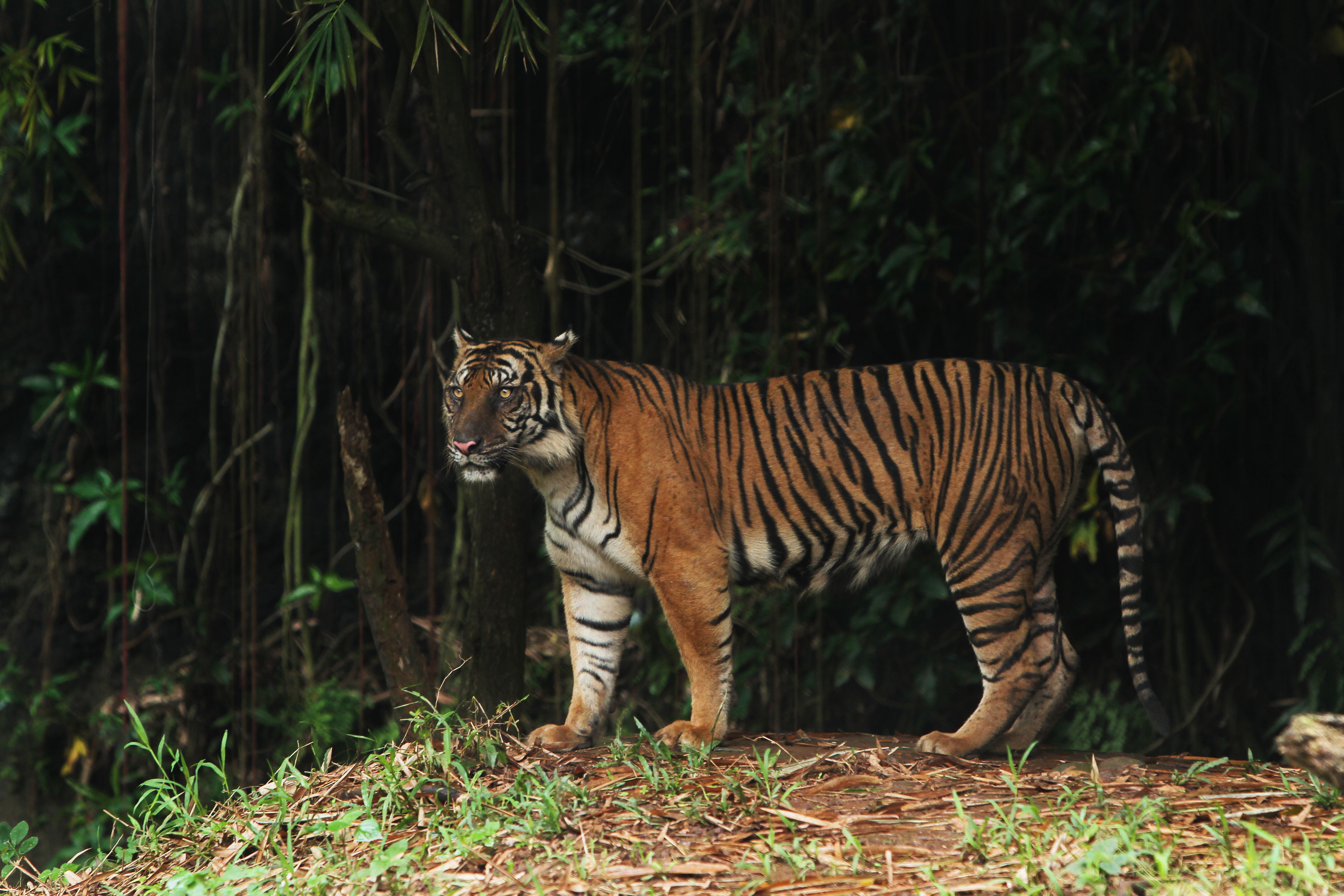May 15, 2019
Meet the Sumatran Tiger (Panthera tigris sumatrae). Like other tigers, it’s a mammal that belongs to the Felidae (cat) family. However, it’s the smallest out of the five tiger subspecies in the world.
As the name suggests, the Sumatran Tiger primarily inhabits the western Indonesian island of Sumatra.
However, the Sumatran Tiger is in extreme danger of extinction due to habitat loss. It’s a Critically Endangered (CR) species, with fewer than 400 of them in the world today.
This tiger species is the size of a big leopard or jaguar, with males weighing up to 140kg while females weigh up to 110kg. The roar of the Sumatran tiger is so loud that it can be heard from over 3 km away.

As it’s a cat, the Sumatran Tiger resorts to the usual method of stalking and ambushing when hunting for prey. From a sitting position, the Sumatran Tiger is able to leap forward 10m to attach its prey from behind, grabbing its neck and latching on until it dies.
The Sumatran Tiger is also known to have the narrowest black stripes among all tiger types, which come in handy when ambushing prey in the Indonesian jungles and it needs to blend in amongst the thick vegetation. It is said that no two tigers are the same, with each tiger having its own unique stripe pattern.
Contrary to popular belief, tigers prefer to avoid people rather than attack them. Sumatran Tigers tend to be solitary creatures, and are known to be very protective over their territories.
Tiger attacks on humans may happen because the animal has been provoked, such as a tigress trying to protect her cubs, or a change in behaviour due to the tiger being sick, unhealthy or ageing.

These tigers typically hunt at night, with their meals often consisting of deer, wild boars, cattle, monkeys, birds and fish. The Sumatran Tiger is capable of biting down with the force of 1,000 pounds per square inch, making short work of meals.
Like domestic cats, the Sumatran Tiger have a curious nature and like to examine things which are not common in the forest. Previously, the RER team has observed the tiger sniffing camera traps which have been set up in the forest, and also stalking the team’s temporary camp sites.

After habitat loss, humans are currently the second biggest threat to the survival of the Sumatran Tiger species. There were estimated to be 1,000 Sumatran Tigers in the wild in the 1970s, a stark contrast to the numbers today.
Although tiger hunting is prohibited in Indonesia by law, poaching of the tigers appear to be continuing as demand for tiger parts remains robust, particularly in Asia.
In recent years, the Indonesian government has opened sanctuaries in a bid to provide a home for the last few remaining Sumatran Tigers. These sanctuaries are also home to other endangered species in the country such as the Sumatran Elephant, Sunda Clouded Leopard, Sumatran Rhinoceros and Malayan Tapir.
